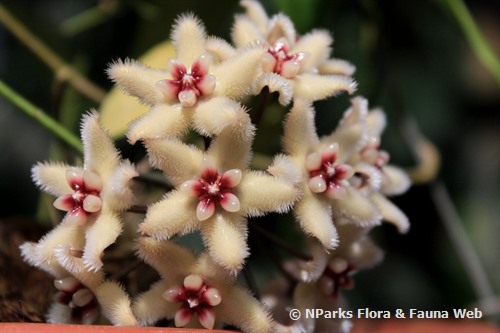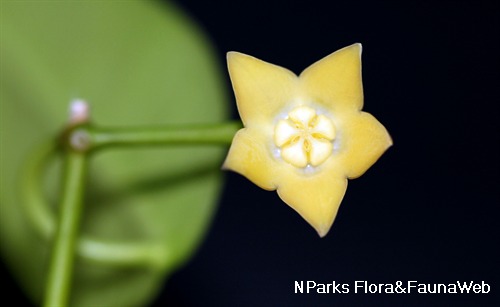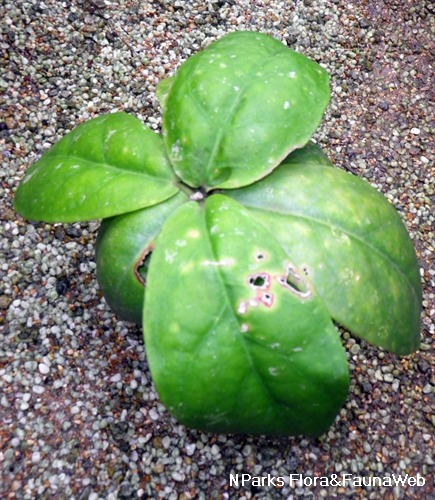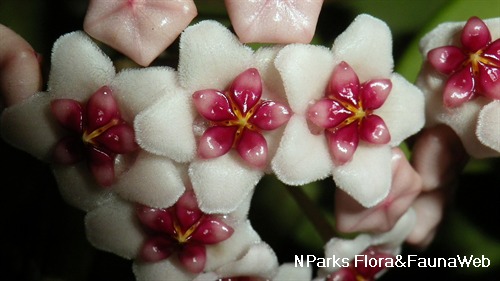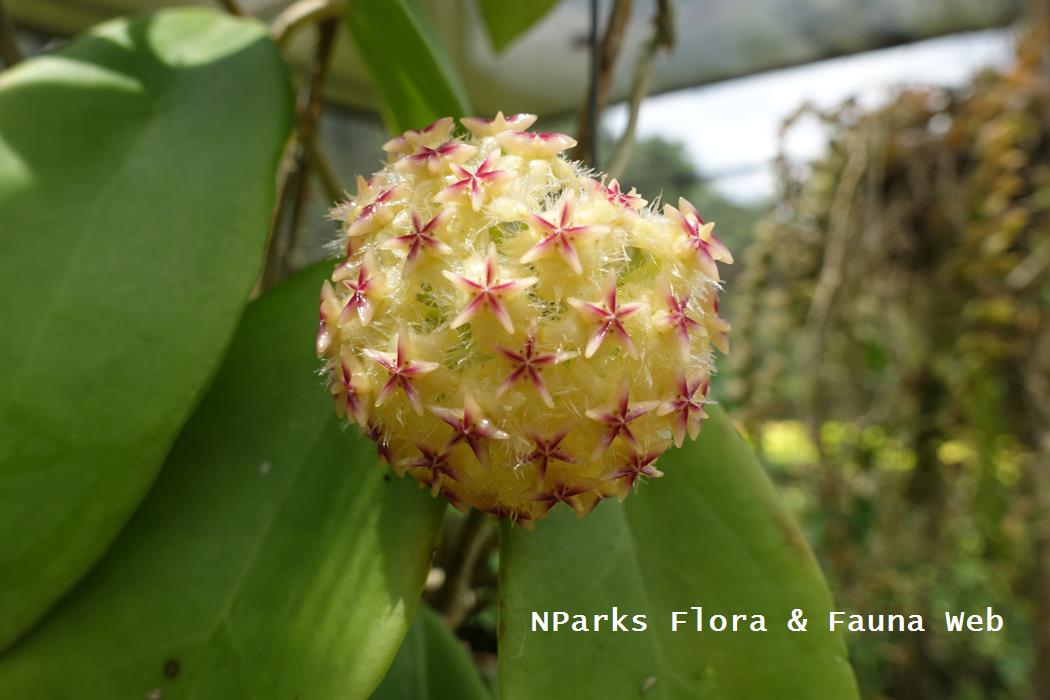
Name
Classifications and Characteristics
| Plant Growth Form | Climber, Epiphyte |
|---|---|
| Lifespan (in Singapore) | Perennial |
Biogeography
| Preferred Climate Zone | Tropical |
|---|
Description and Ethnobotany
| Growth Form | Fast growing, compact vine. |
|---|---|
| Foliage | Leaves glossy green, to 12cm long, often with red tinge when exposed to direct sunlight |
| Flowers | Flowers pale dull yellow, corona cream - pale pink, with a red stripe running along the top of each corona lobe; petals hairy. |
| Similar | This is circulated as the yellow flowered clone of Hoya mindorensis, which also exist as a number of other color forms (dark red, red and salmon). |
Landscaping Features
| Desirable Plant Features | Ornamental Flowers |
|---|---|
| Landscape Uses | Small Gardens, Container Planting, Suitable for Hanging Baskets |
| Usage Hazard - Cons | Toxic Upon Ingestion |
| Usage Hazard - Cons Remarks | Avoid contact with milky/ white sap as it may cause skin irritation in certain individuals. Keep plants away from children and pets as sap could be toxic. |
Fauna, Pollination and Dispersal
| Pollination Method(s) | Biotic (Fauna) |
|---|
Plant Care and Propagation
| Light Preference | Semi-Shade |
|---|---|
| Water Preference | Moderate Water |
| Rootzone Tolerance | Well-Drained Soils, Easy to Grow |
| Pest(s) | Sucking Insects |
| Propagation Method | Seed, Stem Cutting |
Foliar
| Foliage Retention | Evergreen |
|---|---|
| Mature Foliage Colour(s) | Green |
| Mature Foliage Texture(s) | Smooth, Leathery |
Floral (Angiosperm)
| Flower Colour(s) | Cream / Off-White, Pink, Red, Yellow / Golden |
|---|---|
| Flower Texture(s) | Gloss / Shiny, Velvety / Furry / Tomentose |
| Flower Grouping | Cluster / Inflorescence |
| Flowering Period | After Rain |
| Flowering Opening Time | Daytime |
| Flower Lifespan on Plant | Several Days |
Fruit, Seed and Spore
| Fruit Classification | Simple Fruit |
|---|---|
| Fruit Type | Dehiscent Dry Fruit |
Image Repository
Others
| Master ID | 31602 |
|---|---|
| Species ID | 6001 |
| Flora Disclaimer | The information in this website has been compiled from reliable sources, such as reference works on medicinal plants. It is not a substitute for medical advice or treatment and NParks does not purport to provide any medical advice. Readers should always consult his/her physician before using or consuming a plant for medicinal purposes. |





